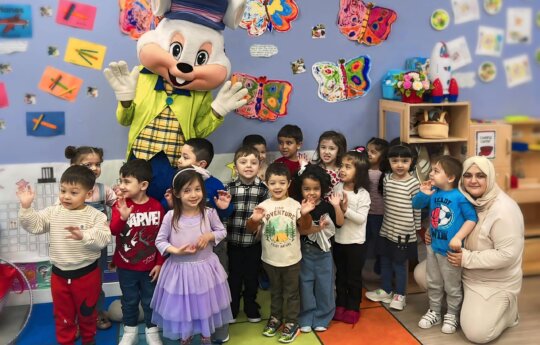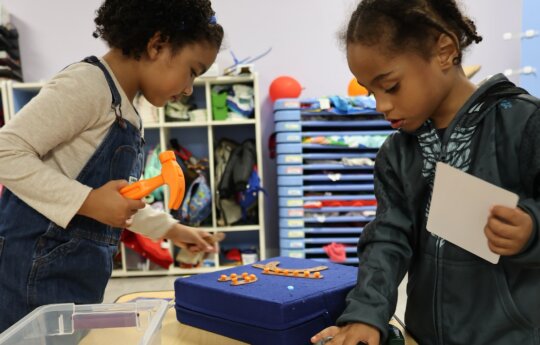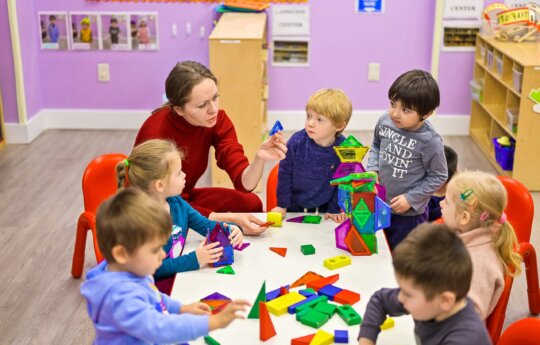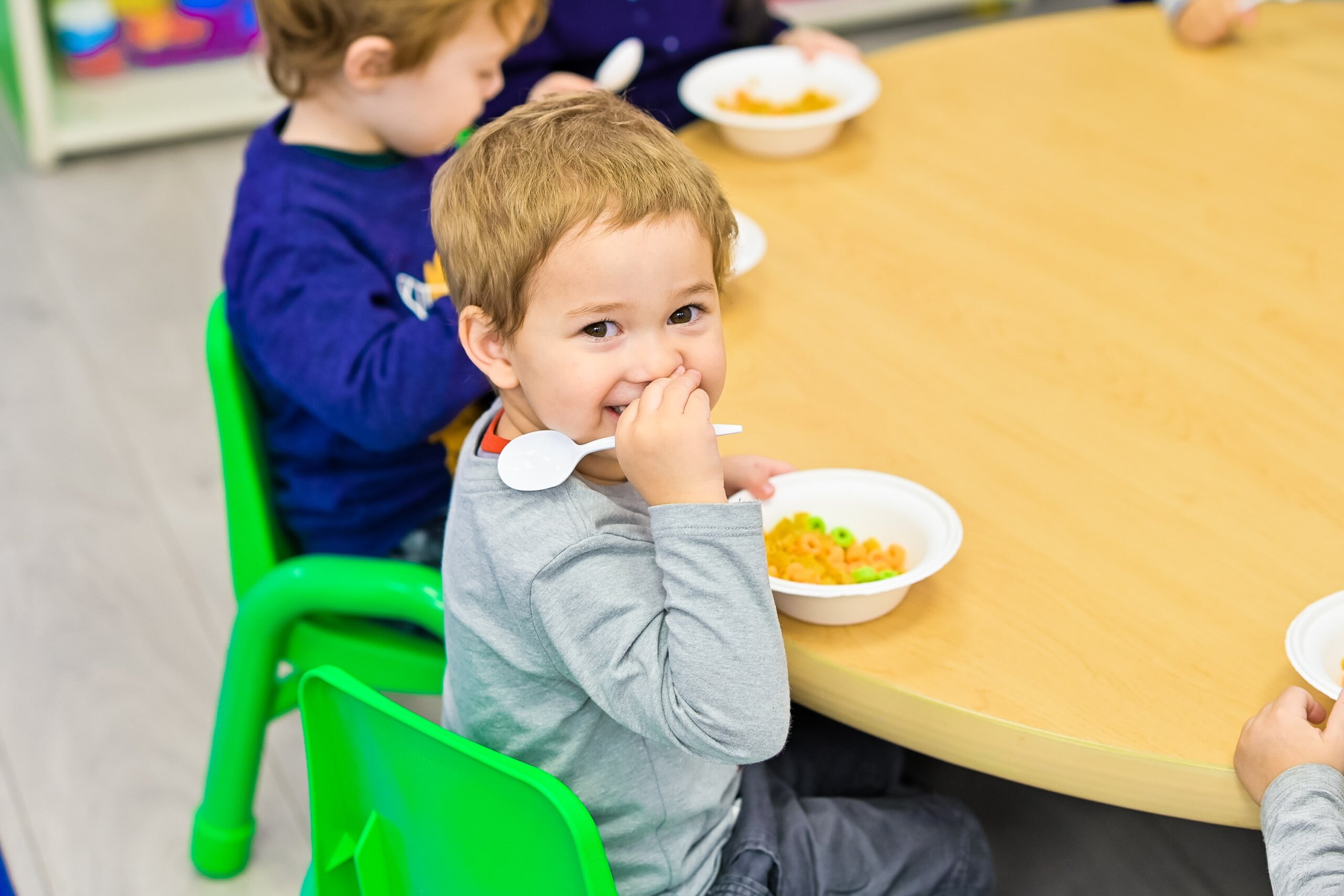
Preschool nutrition is a foundation for lifelong health and well-being. Understanding preschool nutrition is vital for parents and teachers to enhance the growth, learning, and behavior of young children. The right kind of diet assists young persons to grow both physically and mentally towards learning. Well-nourished children are lively explorers, curious, and more comfortable with others, all which can affect social skills and behavior.
Preschoolers are constantly learning, from the alphabet to making friends. Nutrition underpins this dynamic growth and development stage. It helps enhance kids’ focus and memory and stabilizes their emotions, all which can affect behavior and learning. Therefore, a balanced diet and sound eating practices can provide young persons the nutritional ingredients they require in and out of school throughout their lives. This article provides information and fun activities to facilitate the beneficial lifetime practice of preschoolers’ nutrition.
Fundamentals of Nutrition for Preschoolers
Preschoolers in the early years of life require a decent mix of nutrients to keep them growing at a rapid pace and to support the development of their brains. That is, it is fundamental to learn the basics behind nutrition for preschoolers as one can ensure that such children receive the right proportions of macronutrients, such as proteins, carbohydrates, and fats, along with essential micronutrients, including minerals and vitamins.
Macronutrients
To start with, it is possible to say that macronutrients compose the basis of every diet. In the case of preschoolers, it is even more significant as they are in the process of growth and development.
Proteins
Proteins are essential for preschoolers as they are responsible for growth and repair. Proteins build muscle, skin, enzymes, and hormones and help to develop physically and repair tissues . The products that are natural sources of protein are meat, poultry, fish, eggs, dairy products, beans, and nuts .
Carbohydrates
Carbohydrates are products that serve as toddlers’ primary source of energy as they need to be active during the day and to support brain activity. This may help preschoolers to remain active, learn, concentrate, and memorize everything they do. It is rather important to remember that they should be taken from complex carbohydrates, such as whole grains, fruits, and vegetables, as they contain fibers and other nutrients and constitute the most signification part of the diet.
Fats
Fats are also rather essential when creating a healthy diet for preschoolers though it is frequently considered an important issue. They are believed to be an excellent source of energy and make it possible to accumulate fat-soluble vitamins as A, D, E, and K . Moreover, fats are responsible for the proper brain development and decision, as well as healthy skin and tissues. Therefore, natural sources of fats may include avocados, fish, nuts, and vegetable oils.
Micronutrients
Macronutrients are the substances responsible for providing food energy and the materials for building the human body. However, they cannot protect against some diseases or ensure the body’s best performance. Micronutrients, which are vitamins and minerals, play critical roles in ensuring the health and functioning of a preschooler’s body calm. They are essential in small quantities, ensuring that the body and the life-maintaining biochemical processes required for a healthy life are up and running. The following is a breakdown of their importance:
Vitamins
Vitamins are organic substances vital for the body to support metabolism, immune function, and cell health.
- Vitamin A is required for normal vision, immune function, and skin health. The best sources are carrots, sweet potatoes and spinach.
- Vitamin C is required to boost the immune system, facilitates iron absorption, and promotes skin health. Rich sources of the vitamin include citrus fruits, strawberries, and tomatoes.
- Vitamin D is responsible for bone health and proper immune function. It typically helps in the absorption of calcium into the body. The sources of vitamin D include sunlight and fortified milk and fatty fish.
- B Vitamins aid in the production of energy and the formation of red blood cells, vital for the synthesis of neurotransmitters, and also facilitates brain development. Some of the best sources of vitamins include whole grains, meats, eggs, and legumes.
Minerals
Minerals represent inorganic elements that can be used by the human organism to complete different purposes ranging from building strong bones to transmitting nerve impulses. Among some of the key minerals may be the following:
- Calcium is absolutely essential for developing strong bones and teeth. Furthermore, this mineral is required for proper muscle functioning and cell-signaling. Dairy products, broccoli, some fishes, and fortified foods are some of the best resources of calcium.
- Iron is a vital component of hemoglobin, which is responsible for transporting oxygen in the human body’s blood stream and thus is especially important during the preschool age when children are growing most rapidly. As for the best sources of iron, these include red meat, poultry, shell fish, and fish, as well as leafy greens and fortified cereals.
- Zinc is important for human growth, immunity functioning, and wound healing. Meat, dairy food products, and whole grain cereals are some of the best sources of this mineral.
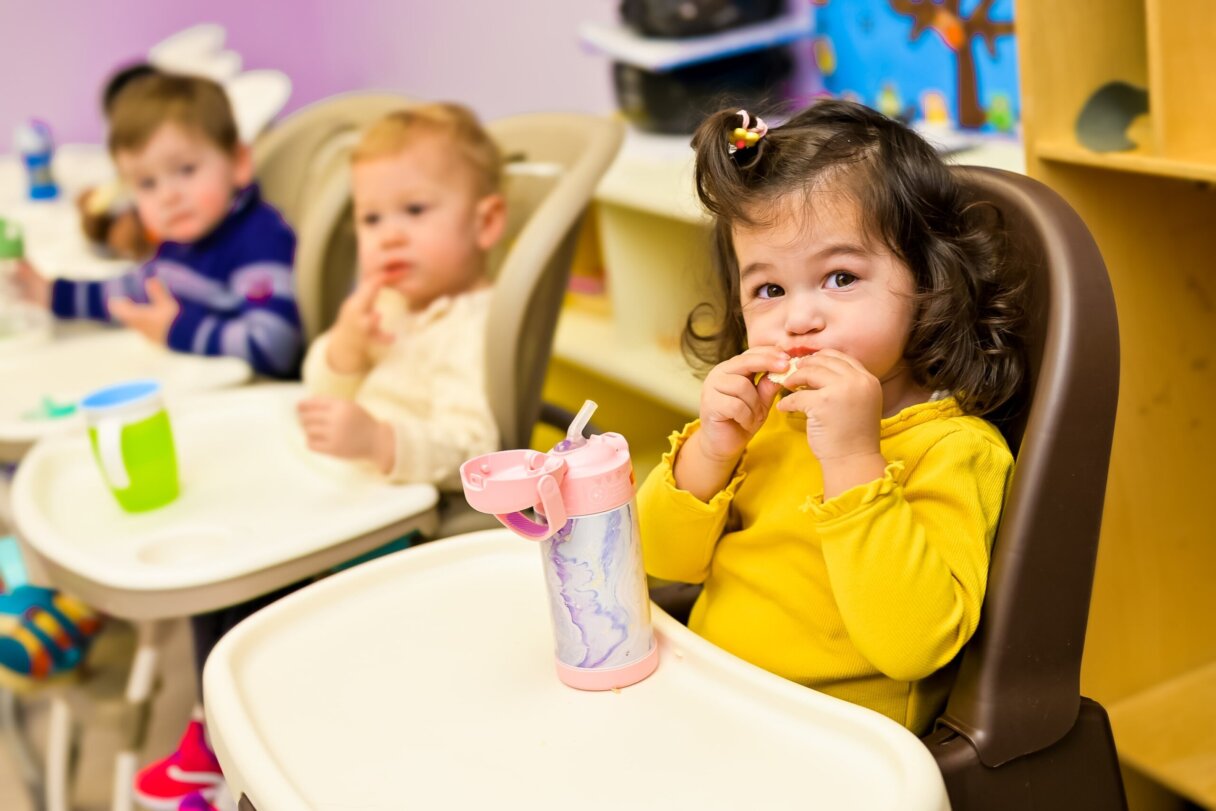
Hydration
It is a well-known fact that water is important for everyone, and preschoolers need it, though usually this information is not presented with the same frequency and insistence as nutrition data. Water serves several extremely important functions in the human body. It includes, first of all, the effects on cellular integrity and function, heat balance maintenance, and a favourable impact of digestion, absorption, and excretion processes.
Cellular Health and Function
Water is known to be the main component of all cells, holding the structure of each cell. It is also necessary for the proper activity of tissues and organs and for ensuring that all necessary functions go smoothly without any disruptions, supporting healthiness and well-being.
Temperature Regulation
If children are active or, on the contrary, not actively regulating their body temperature, water is used for that purpose as well, normalizing the body temperature by perspiration.
Digestion and Elimination
Water is also incorporated into saliva and gastric juice and helps to dissolve food components for faster processing. It prevents constipation of the child by preventing the stools from hardening and helping the bowel system to work smoothly.
Nutrient Transport and Waste Removal
Changes in the amount of water in the blood affect the concentration of salts and plasma proteins. For this reason, the concentration of plasma proteins and the quantity of salts in bodily fluids are regulated by the amount of water in the body. The fact is that blood plasma is a liquid in which various types of cells are suspended.
Cognitive Function and Concentration
One of the most important indicators of cognitive function in a person’s content ration ability. Even fairly mild dehydration can reduce one’s attention span and sensory perception, impair short-term memory, and cause many other dysfunctions.
Encouraging Adequate Hydration
To ensure preschoolers stay properly hydrated, it’s important for caregivers and educators to encourage regular water intake throughout the day, not just during meal times. Providing accessible water bottles, leading by example, and educating children on the importance of drinking water are effective strategies to promote hydration. Additionally, offering water-rich foods like fruits and vegetables can contribute to overall fluid intake.
Building Healthy Eating Habits
Routine
Feeding times work not only as nutrition but simultaneously provide a foundation for overall daily routine and healthy eating habits. Many preschools make a point of serving meals and snacks at the same time each day to prevent hunger and overeating and give kids a sense of security the predictability of regular meals. Establishing a routine also supports stable environment that helps young child’s body function and aids in developments – physical, cognitive, and emotional – by providing expected conditions for preschoolers and regular feeding times.
1. Regulation of Metabolism
Scheduling regular meal and snack times helps regulate a child’s metabolism. Feeding your preschooler every 3 or 4 hours can help stabilize their glucose levels, which will affect their energy levels and mood. It helps maintain focus and mental energy they need to stay active and for the child who is still growing.
2. Reduction of Overeating
Once the habitual eating time is created, the children begin to wait for them and are not inclined to bump or eat something off-topic. And, of course, it is very convenient to instill in them a childlike habit of listening to their needs and not eating when they do not feel hungry.
3. Better Nutrient Distribution
A planned eating schedule ensures that children receive a full and balanced diet. Structured lunches and snacks will help ensure that the required amount of water, proteins, fats, carbohydrates, vitamins, and minerals is spread evenly throughout the day. This is especially important for the growth and development of children up to five years.
4. Enhancement of Social Skills
Mealtimes are ample, not only for food. The structured and alternating topic of lunch and snacks offers a wonderful opportunity to develop children communication, familiarizing them with table wear, joints, and meals. This will enable children to learn to speak more freely and to bring their position to other members of the family or to the core.
5. Creation of a Sense of Security
Young children thrive on routine as it creates a sense of security and predictability. Knowing when to expect meals and snacks can reduce anxiety and help children feel more secure and focused on other activities throughout the day.
6. Support for Academic and Behavioral Development
A consistent eating schedule supports cognitive function and behavioral development. Adequate nutrition provided at regular intervals promotes concentration, memory, and learning capabilities, while also potentially reducing behavioral issues linked to hunger or poor diet.

Variety
Diversity in a preschooler’s diet is not a matter of ensuring they do not get bored while eating; it is an essential condition for ensuring that they receive all the required nutrients. A wide range of consumed foods helps obtain a variety of vitamins, minerals, and other nutrients that are necessary for the adequate development of a child’s body.
1. Nutritional Balance
Various food groups contribute different nutrients, and it is important for them to all be in their place. For example, different types of fruits and vegetables provide significantly different types of vitamins and fiber. Proteins are needed for muscle and tissue growth, and fats will support the development of a healthy brain.
2. Prevention of Nutritional Deficiencies
If we eat the same set of products daily, we are at risk of missing out on quite a few of them. It is far safer to introduce our kids to a wide range of them while they are still preschooler. Practically any deficiency risk can be prevented by consuming a limited amount of food present in all of the basic groups. For example, we can combat iron deficiency by serving beef, pork, chicken, liver, and legumes to our child. Calcium and vitamin D found in dairy products or their surrogate in fortified soy milk, cheese and yogurt will keep its bones healthy.
3. Promotion of Taste Preferences
The less variety we are offered in childhood, the harder time we will have widening our food palette as we grow older. It simply is an awful idea to instill a picky attitude towards eating in our children. The best thing we can do to ensure they will not refuse certain foods later in life is making sure they get to try them while they are still young .
4. Cognitive and Sensory Development
Trying different types of food also serves as a tool for the cognitive and sensory development of a child. Experiencing new flavors and textures as well as other attributes of meals promotes an exploratory nature . Additionally, such experiences can elevate the sensitivity of the kid to other food-related sensory skills such as taste, smell, and texture recognition .
5. Cultural Appreciation
Another perspective to consider is an increased interest in and appreciation of a specific culture that produced a particular meal. This interest can lead to a cultural-oriented education in which children are exposed to the foods, traditions, language, and other elements of the respective culture. This approach underscores the idea of acquiring awareness and appreciation of other cultures, and, when accompanied by food exposure, it can facilitate learning.
Moderation
Preschoolers are unable to take care of themselves, so their diet mainly depends on adult decisions. Therefore, moderation is a crucial factor for their proper nutrition. This approach includes educating children on appropriate sizes of portions and teaching them that all food groups should be consumed in balance for their normal diet. This way, caregivers can ensure that their children do not eat more than they need and, at the same time, receive all the necessary nutrients without extra calories. Below are more reasons why moderation should be taught and how it can be taught effectively.
1. Understanding Portion Sizes
Much of the eating patterns of a person are formed in preschool, so it is the perfect age to teach children about controlling portions. Size awareness teaches children to listen to their bodies and comply with their nutrition requirements, which is important for maintaining a healthy weight and preventing obesity.
2. Preventing Nutrient Excess
As the lack of nutrients is bad for health, over consumption of some nutrients may lead to health conditions. For instance, excessive intake of sugar and fat may be the reason for weight gain and other health problems. Therefore, teaching moderate eating will help children understand that some foods can be used occasionally, but they should not dominate the diet.
3. Promoting Long-term Health
The idea of being moderate with food allows integrating the long-term aspect into health promotion. If from an early age, children understand they should eat certain products or components of food moderately, they will continue to keep to this lifestyle as adults. Reasonably eating helps prevent such health issues as diet-induced diabetes, heart diseases, and other problems.
Practical Nutrition Ideas for Preschoolers
Meal Planning
It is a good way to have fun and get some rewards by making balanced meals for preschoolers. It is important to add nutrients and prepare the meals which are visually appealing and simple enough for preschoolers to get interested in. Here are some examples of what can be added or made to feed preschoolers.
Breakfast Ideas
- Oatmeal with a Twist: Cooked oatmeal topped with sliced bananas, a sprinkle of cinnamon, and a few raisins. Serve with a side of yogurt to incorporate dairy.
- Colorful Fruit Parfait: Layer yogurt with various chopped fruits like strawberries, blueberries, and kiwis, and top with a small sprinkle of granola for crunch.
- Egg Muffin Cups: Whisk eggs with a little milk, diced vegetables (like bell peppers and spinach), and cheese. Bake in muffin tins for a fun and easy-to-eat breakfast.
Lunch Ideas
- Turkey and Cheese Roll-Ups: Turkey slices wrapped around cheese sticks and sliced bell peppers. Serve with whole-grain crackers and apple slices.
- Mini Pita Pockets: Stuff mini pita bread with hummus, shredded lettuce, and shredded carrots. Pair with cucumber slices and a small box of raisins.
- Rainbow Wraps: Whole wheat wraps filled with a variety of colorful vegetables (like grated carrots, purple cabbage, and greens), chicken strips, and a light dressing. Cut into pinwheels for easy handling.
Dinner Ideas
- Homemade Chicken Tenders: Breaded and baked chicken tenders served with sweet potato fries and steamed broccoli. Offer a mild dip like ketchup or homemade yogurt dip on the side.
- Fish Tacos: Grilled or baked fish in small tortillas with shredded cabbage and a dollop of yogurt-based sauce. Serve with a side of mashed avocado.
- Pasta Primavera: Whole grain pasta tossed with a variety of lightly sautéed vegetables (such as zucchini, cherry tomatoes, and bell peppers) and a sprinkle of Parmesan cheese.
Snack Ideas
- Veggie Sticks with Dip: Carrot, celery, and cucumber sticks served with a hummus or yogurt dip.
- Fruit Skewers: Pieces of different fruits like melon, grapes, and pineapple threaded onto skewers for fun and easy eating.
- Cheese and Fruit Bento: Small cubes of cheese paired with whole grain crackers and bite-sized pieces of fruit.
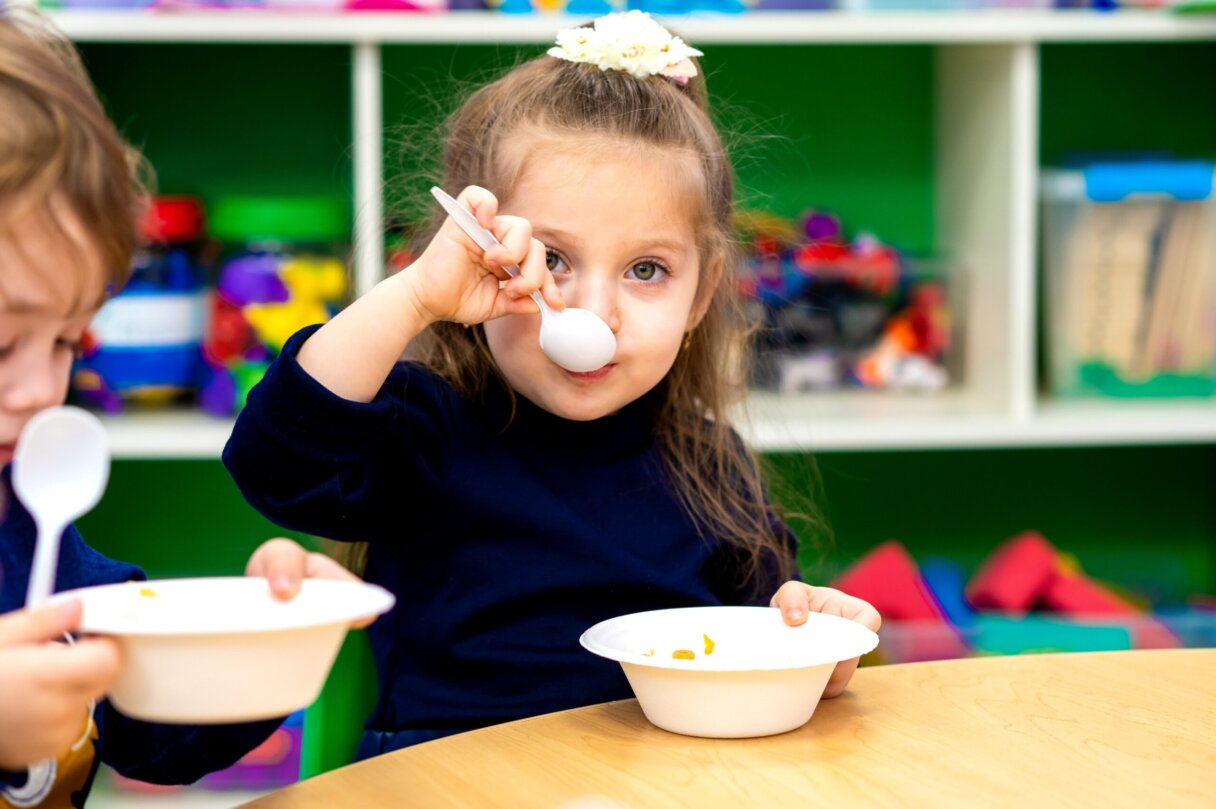
Dealing with Picky Eaters
Picky eating is a common phase of child development, triggering stress for parents or other people responsible for the diet. The following strategies will assist in easing the situation and making a picky eater have the first positive experience of trying to eat something unusual.
1. Introduce New Foods Slowly
Psychologically, a child may resist an unfamiliar food even if it is an all-time favorite . Introduce new foods with the portion your child enjoys. Try to suggest one new snack or meal instead of pushing them to eat most of the plate they find unusual.
2. Involve Children in Food Preparation
Children tend to consume the products they have cooked themselves. The period of refusal to even taste can be followed by adding them to the group to help with food preparation. They enjoy washing the vegetables, whipping the dough, or planning the ingredients, and they will feel like trying the food.
3. Make Food Fun
Creativity can turn mealtime a more fun and less stressing event for a picky eater. You can use cookie cutters to shape sandwiches, make faces on plates with different vegetables, or let them assemble their own tacos, pizzas, or any other foods they prefer.
4. Offer Choices
While you need not turn yourself into a short-order cook, offering limited choices can make your child feel empowered. For example, ask them whether they will want carrots or celery with their lunch. This will make them feel more in control of what they eat.
5. Avoid Pressure and Bribery
Pressure overates, and bribery often backfires. The best way to ensure your child learns to appreciate food is by keeping food and mealtimes positive and stress-free. Encourage your child to taste new foods but never force it. Instead, you can praise them when they try something new, but then forget it.
6. Eat Together as a Family
Children learn by example, and eating as a family can set a good role for picky eaters. They will be much more likely to try out a new food when you eat it too.
7. Be Patient and Persistent
New food may need to be presented up to 10-15 times before the child will even try it. Don’t get discouraged if the first 5-6 attempts don’t work out the way you would like them to.
8. Hide the Veggies (If Necessary)
You can incorporate vegetables into their meals in ways where children cannot understand it. For example, blend veggies into the sauce, soup, or a smoothie in ways where they cannot be tasted or even seen.
9. Educate About Food
Read books, play games, and have conversations around the topic of food. Help children understand why one kind of food is “good” and the other is “bad” for them.
Educational Nutrition Activities for Preschoolers
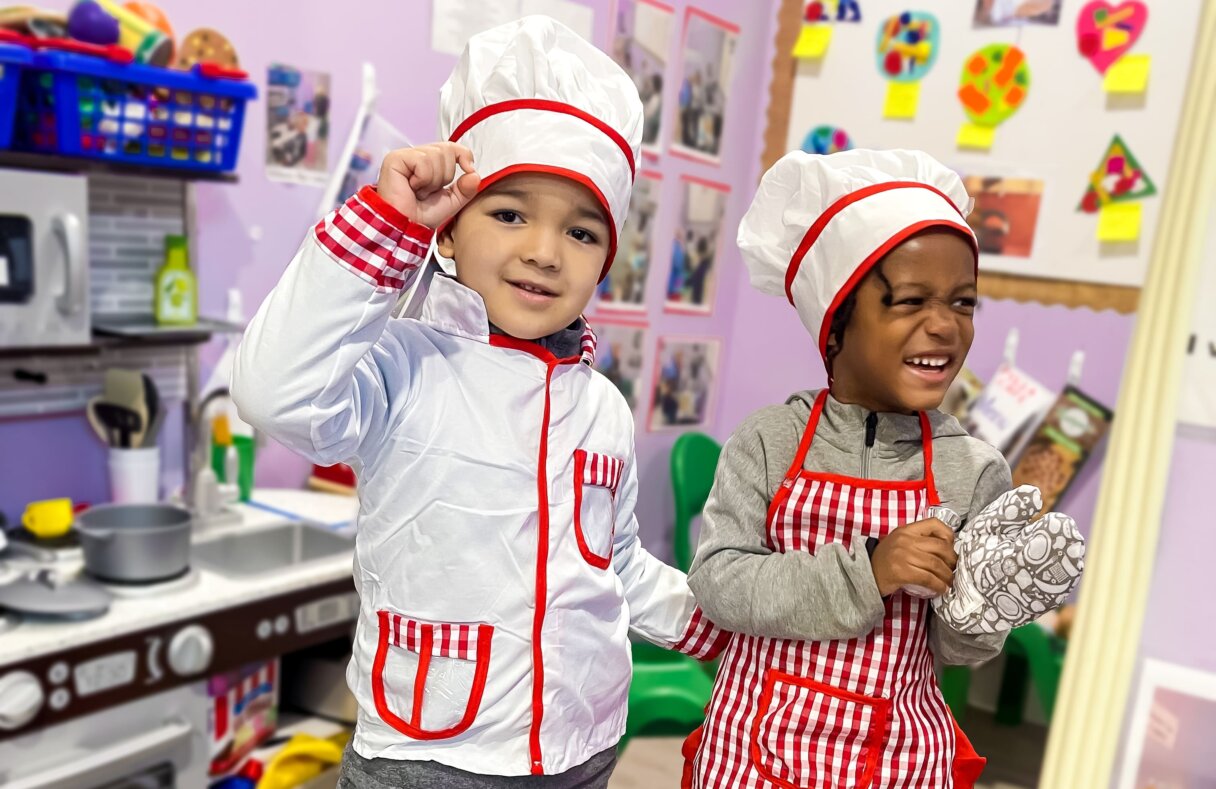
Interactive Cooking
There is a common saying that many hands make work light. However, many heads also make any learning session fun and thought-provoking, asserting that getting kids in the meal preparation process might offer a better insight into the learning process and make the kids have an interest in eating healthy. While preparing food for their family, children will learn to cook and enjoy their meals as a reward for their efforts. The aspect of ownership will also make them adjust their preferences and work towards a particular meal. Some of the ways of getting kids involved in cooking are facilitating critical thinking by involving different steps and ingredients, developing order of priorities, and coded message approach.
1. Choose Simple Recipes
First of all, select the recipes that are easy and safe for children to participate in. Mixing, assembling, or decorating some dishes can be a terrific choice. For example, you may prepare fruit salads, assemble vegetable pizzas, or decorate ice-cream and yogurt parfaits. They can be very simple to make, yet they will be engaging for your children.
2. Assign Age-Appropriate Tasks
Try to enlist the activities and tasks that children of a certain age and abilities can participate in. For example, younger children can wash fruits and vegetables, tear lettuce for salads, or help you mix the ingredients. Older children can measure, cut, or help you to prepare some of the simpler cooking steps.
3. Educate While Cooking
While cooking with your children, you can also tell your children some interesting facts about the ingredients, fruits, and vegetables they will be preparing, why they are good for their health, where they grow, etc.
4. Create a Theme Cooking Day
For example, declare “Taco Tuesday” or “Smoothie Saturday.” Such a meal is expected for children, and at the same time, you can put in front of them a variety of foods in a thought-out and interesting way.
5. Use Fun Tools
Get some tools for children, like nylon knives, colorful measuring cups, cooking molds with funny animal shapes, etc.
6. Involve Them in Meal Planning
Before going shopping, tell the children about your intentions: what will you want to put together this time and what you will need for that. Let them choose from the list the vegetables or batteries that they will prepare, tell them what “surprises” they have in mind for them.
7. Taste Test
Encourage children to taste the ingredients as they cook . They can become familiar with the different tastes and flavors.
8. Celebrate Their Efforts
After cooking, praise the child’s effort and tell him how much you have enjoyed the dish. Make him proud of his achievement. It’s the best way to increase the chances of your child voluntarily contributing in future.
Nutrition-Themed Games
Introducing play in the process of learning about the nutrition facts is an effective tool that will engage preschoolers and help them acknowledge the value of consuming healthy food. In other words, games can be used to render the notion of nutrition more understandable and enjoyable for young children. The following fun and interactive games will help kids learn to make the right choice concerning the foods that they eat:
1. Colorful Foods Rainbow
Each child is given a magazine, a compart or grocery flyers and round tipped scissors. They should be cut out the ads section of all kinds of foods and groups are gathered in a separate container. The game itself is to remind about the colors of the rainbow and offer children to select and place all the foods of the same color they have selected. Then offer to put the most colorful plate. All colors will be signs of nutrients, and a final discussion of the benefits of each of the colors and meals.
2. Nutrition Sorting Game
At the table a child is given a set of cards that need to be cleaned during the game. For this purpose, they are given a set of baskets, cups and boxes with tags: Fruits, Vegetables, Archer, Proteins, Dairy . Cards are images on them . When sorting children learn to do dietary foods, namely sorting them into some sort of basket. The teacher does that it is necessary to eat every day in order to be a healthy person with the child and that it is the use of the use of acidic and harmful.
3. Vegetable Garden Harvest
Create a play area, where children can play being gardeners and ‘grow’ and ‘harvest’ some toy or paper/felt vegetables. After they pretend to ‘plant’, take care of and pick the vegetables, have a conversation about the benefits of vegetable food for their body and the nutrients each vegetable provides.
4. Healthy Plate Bingo
Create some bingo cards that are divided into sections depicting food groups and healthy habits or physical activities. As you call out various kinds of foods or some habits of a healthy person , children should cover this area on their bingo card. This way, they will not only remember a concept of a balanced diet but also acquire some healthy daily routine patterns.
5. Guess the Food
You can put a blind one of the children and perform some tasting of various fruits, vegetables or ready-made dishes. Children should guess what they are tasting according to their flavour and structure. After each guess, tell them what benefits for their health the food they have just tasted gives.
6. Food Group Relay Race
This could be a team relay race. Each team would have to run to a station where one of the foods is. Which foods children need to take, will be determined by their food groups. When all products are collected, the team must run back. As a prize, they would cook a big healthy lunch by all the collected products for children. This way of work promotes teamwork and revises good knowledge of the food groups.
Resources for Parents and Educators
Websites
- ChooseMyPlate.gov – Offers a wealth of information on balanced diets according to USDA guidelines, including sections specifically designed for children.
- American Academy of Pediatrics (AAP) – HealthyChildren.org – Provides comprehensive articles on child nutrition, growth, and food safety guidelines authored by pediatricians.
- Centers for Disease Control and Prevention (CDC) – Nutrition – Features guidelines and tips on feeding children, addressing specific nutritional needs at different developmental stages.
- EatRight.org – Managed by the Academy of Nutrition and Dietetics, this site offers practical food and nutrition tips for children and families.
Books
- “Nutrition: What Every Parent Needs to Know” – Edited by William Dietz and Loraine Stern, this book offers guidance on feeding children from birth through adolescence.
- “Feeding with Love and Good Sense: 18 Months through 6 Years” by Ellyn Satter – Focuses on developing healthy eating habits and attitudes from a young age.
- “The Pediatrician’s Guide to Feeding Babies and Toddlers” by Anthony Porto and Dina DiMaggio – A comprehensive manual on nutrition from newborns to preschoolers, written by pediatricians.
Organizations
- World Health Organization (WHO) – Nutrition – Provides global guidelines on child nutrition, including resources on how to improve dietary practices.
- National Institute of Child Health and Human Development (NICHD) – Offers research and education on child development and health, including nutrition studies.
- Academy of Nutrition and Dietetics – Features resources and publications on pediatric nutrition from registered dietitians.
Online Tools and Apps
- SuperTracker – Previously provided by the USDA, this tool offered personalized nutrition and activity plans. It’s worth looking for similar updated tools that offer tracking and planning capabilities.
- MyPlate Kids’ Place – Provides games, videos, and activities designed to teach children about nutrition in an engaging way.
Conclusion
Cooking with kids can ignite their curiosity about nutrition and inspire them to try new meals. Moreover, we can create fun, instructive games about food and healthy eating to make nutrition lessons exciting for children. When parents and educators teach and promote good eating behaviors, they may have a lifelong influence on children’s health. Providing an environment that values nutrition starting in childhood may assist kids in maintaining a healthy lifestyle as grownups.
Utilize the resources to ensure that nutrition is enjoyable and essential for children. Each meal offers an opportunity to nourish a child’s body as well as their inquiring mind!
Join Us at Little Scholars Daycare
Are you ready to assist your child from the earliest years, empowering him with the basics of proper nutrition and the principles of a healthy lifestyle? At Little Scholars Daycare, we realize the importance of feeding young bodies and minds with balanced and beneficial food.
Check our Leaning Center to learn more about our sample menu and to see the way we include a variety of delicious and nutritious food in our daily meal plans. Make your child’s life both in school and at home less complicated with our support.


